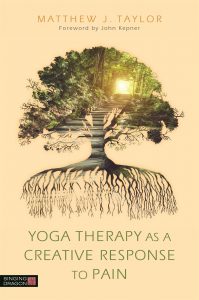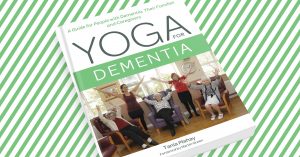
In the first part of our Q&A with Dagmar Härle, she discusses her background as a therapist, and how those who have been affected by, or experienced trauma, can improve emotional and physical well-being by participating in ‘trauma-sensitive’ yoga. Click here to read part 2 of the Q&A.
What led you to become a yoga teacher and a trauma therapist? What inspired you to combine the two?
I practiced yoga for many years and eventually I wanted to learn more, and get a deeper understanding of yoga and its philosophy. Therefore, I completed first a kundalini and later a Hatha yoga teachers training course and began teaching yoga classes. It was a perfect combination and helped me to stay balanced and resilient in my work as a coach and therapist, and I learnt mindful tools that I could teach to my clients.
I started trauma therapy training about 15 years ago in somatic experiencing, as I had so many clients who suffered from various symptoms due to trauma (especially trauma beginning in childhood), and I realised that I needed tools to work with clients who had such experiences. My studies of psychotraumatology at the University of Zurich deepened my knowledge and experience of working with those with trauma, but still there was a missing piece. So many patients couldn’t tolerate trauma exposure – they either dissociated or reacted with overwhelming sensations and emotions.
Yoga is a perfect training for the nervous system because there exists calming as well as activating poses and breathing techniques, and it has become obvious to me that yoga is a perfect tool to support patients in self-awareness, self-efficacy and self-control. I started with mindful yoga groups for patients and then I eventually brought yoga into therapy. Going to the Trauma Center and learning from David Emerson and Jenn Turner the TCTSY (Trauma Sensitive Trauma Center Yoga),
I was reassured in my way of using choice as an important way of supporting self-control and self-efficacy to the patients. In practice, for instance, you can execute a side bend with both arms stretched or one arm stretched while the other arm may hang loose or you sit on a chair and bend forward putting your hands on your knees or you go deeper perhaps until your hands reach the floor. It`s always the choice and under control of the patient.
What effect does practising yoga have on emotional and stress responses?
Yoga offers asanas-postures as well as pranayama-breathing techniques to either calm down or activate the nervous system, or in other words, activate either the parasympathetic or the sympathetic branch of our nervous system. Understanding that trauma survivors suffer from both – overwhelming sensations and emotions (sympathetic branch) as well as dissociation and shut down (parasympathetic branch, or more exact, the dorsal vagal part of it) helps to let clients know that they can benefit from yoga because we can offer them the tools for both. Learning the tools to stop dissociation and to be able to handle overwhelming emotions and sensations has an important effect on self-efficiency and self-worth.
Continue reading →
 “Fear invokes wars, elects tyrants to government offices, sell cosmetics and medications, belittles the human spirit, and tells us we are not enough”.
“Fear invokes wars, elects tyrants to government offices, sell cosmetics and medications, belittles the human spirit, and tells us we are not enough”.


 take for you to shift to “moving through” the holidays or “experiencing” the holidays rather than just trying to get through them? Although the difference in this wording is somewhat subtle, it can be significant as we shift from survival mode into a more holistic acceptance of the process of being present—mind, body, and soul—for the holidays.The glow of Christmas trees, menorahs, and Diwali candles, along with many other images and traditions from richly diverse cultures, light our way through the holidays each year. Along with the beauty of holiday decorations and celebrations, however, often comes a fair amount of stress. This could be financial stress or the stress of physical exhaustion from simply trying to keep up with all of the extra events. It could also be emotional stress due to an injury or illness, challenging family dynamics, or grief from the loss of a loved one. Pause for a moment and check in: On a scale of 1 to 10, what is your current stress level? Breathe. Look around you. Then, look within. Is there any crisis taking place in the current moment, or is the stress generating from within? Feel the soft rhythm of your inhale and exhale washing through you with grace.
take for you to shift to “moving through” the holidays or “experiencing” the holidays rather than just trying to get through them? Although the difference in this wording is somewhat subtle, it can be significant as we shift from survival mode into a more holistic acceptance of the process of being present—mind, body, and soul—for the holidays.The glow of Christmas trees, menorahs, and Diwali candles, along with many other images and traditions from richly diverse cultures, light our way through the holidays each year. Along with the beauty of holiday decorations and celebrations, however, often comes a fair amount of stress. This could be financial stress or the stress of physical exhaustion from simply trying to keep up with all of the extra events. It could also be emotional stress due to an injury or illness, challenging family dynamics, or grief from the loss of a loved one. Pause for a moment and check in: On a scale of 1 to 10, what is your current stress level? Breathe. Look around you. Then, look within. Is there any crisis taking place in the current moment, or is the stress generating from within? Feel the soft rhythm of your inhale and exhale washing through you with grace.



